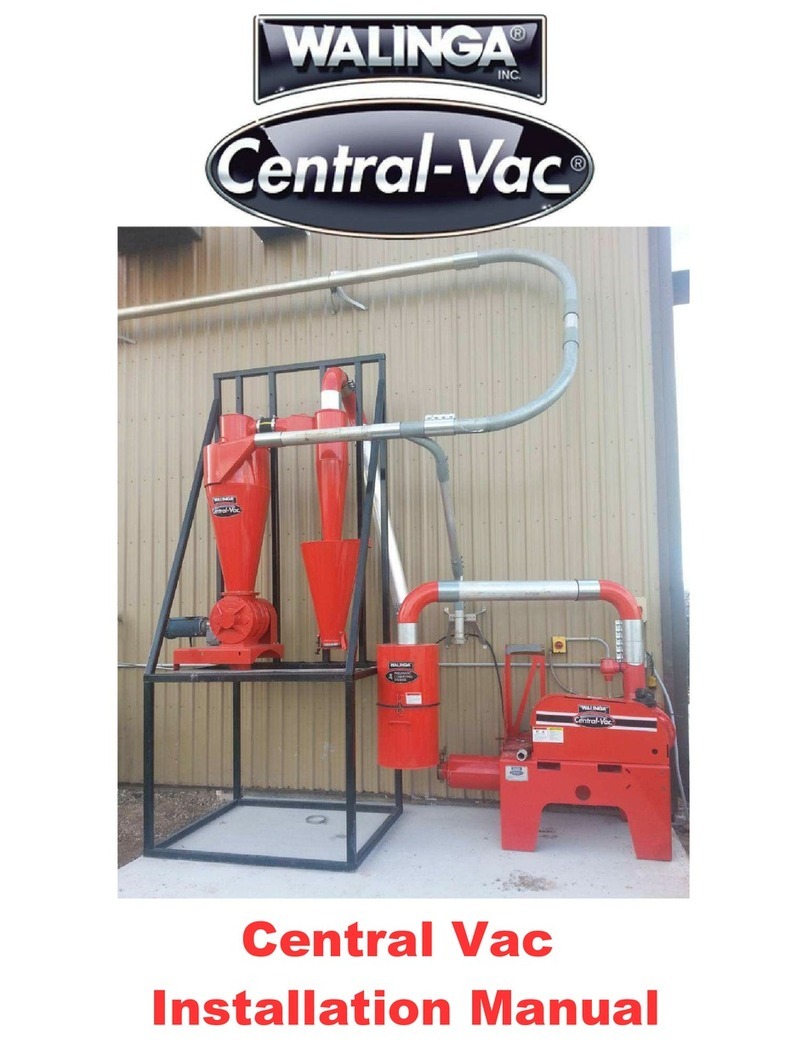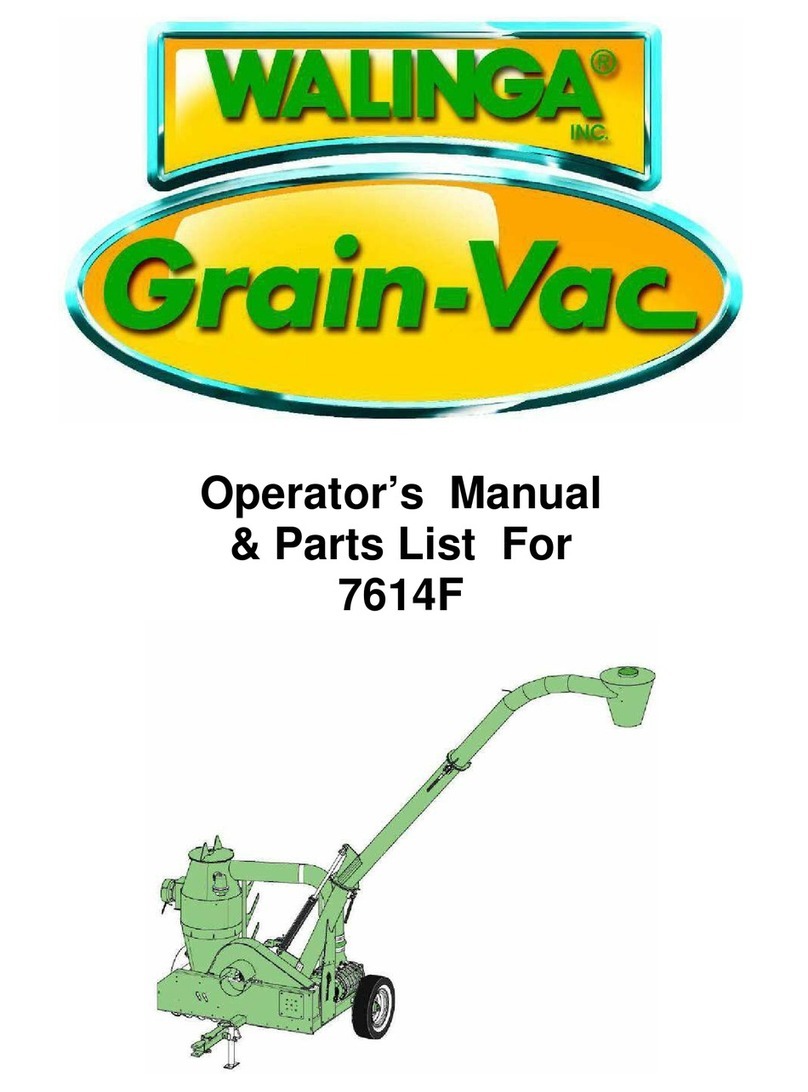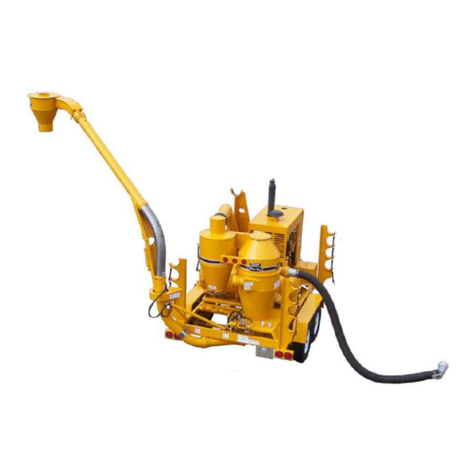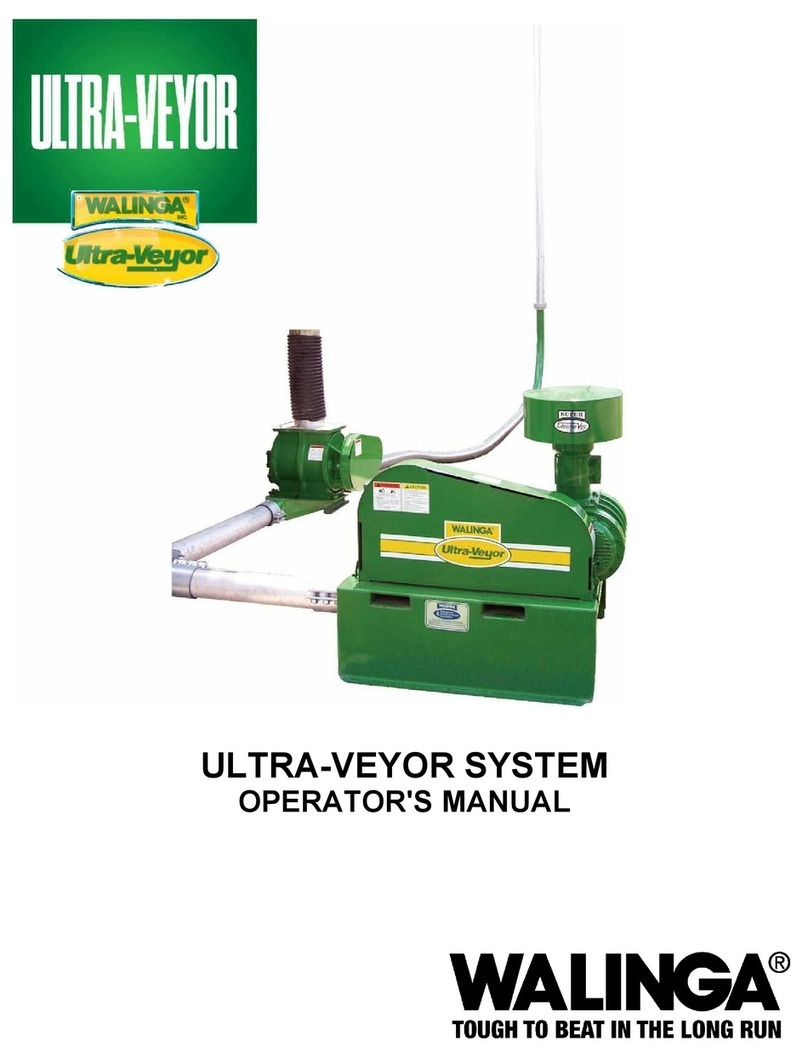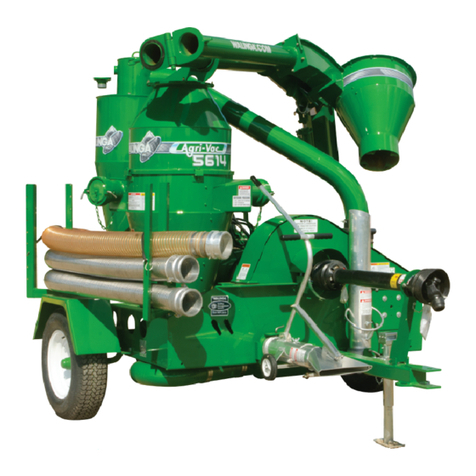
Warranty Conditions (continued)
The buyer is responsible for promptly notifying Walinga of any defects to the equipment. The buyer is also
responsible for making the equipment available to Walinga or its authorized repair facility for evaluation and repair.
Prior to making any repairs or parts replacements, a warranty application and any estimated associated costs must
be approved with the issuance of a claim number by an authorized Walinga representative. Undertaking any work
prior to receiving warranty authorization may result in a partial or complete loss of warranty coverage.
At Walinga's discretion, warranty repairs may be authorized to be completed at a repair facility convenient to the
buyer. In such situations the estimated labour time must be approved by Walinga prior to undertaking any work.
Labour hours will be reimbursed at the facilities posted hourly labour rate.
At Walinga's request, parts in question must be returned to the nearest Walinga service facility for evaluation. In such
situations a Returned Goods Authorization (RGA) number will be provided to the buyer. The returning shipment must
be clearly labeled with the assigned RGA number and include a copy of the RGA form. Unless otherwise arranged,
these parts are to be returned to Walinga within 30 days to ensure timely processing of your warranty claim. Failure
to return such parts may result in partial or complete loss of warranty coverage.
Replacement parts provided under warranty are covered for the remainder of the original equipment warranty period.
Walinga reserves the right to use new, remanufactured or refurbished components when performing warranty repairs
and replacements.
Walinga is entitled to a reasonable amount of time and a reasonable number of attempts to assess the claim,
diagnose the problem, and perform any necessary repairs.
The warranty offered on used or refurbished equipment is limited to that specified on the purchase contract. Where a
warranty period has not been stipulated on the purchase contract., and where such equipment is “used”, then such
equipment is considered by Walinga to be sold “as is, where is” without the Walinga Warranty. Where such
equipment is refurbished, then the Walinga Warranty shall apply.
Without limitation, Walinga reserves the right to reject a warranty claim or for any one or more of the following
reasons:
The warranty claim information provided is insufficient.
The product evaluation does not substantiate the claim.
The unit has been operated above and beyond its capacity or not maintained or serviced properly, resulting in
damages incurred to major components.
If the unit was equipped with a factory installed hour meter which has been disconnected, altered or inoperative for
an extended period of time; with the result being that the equipment’s operating hours cannot be verified.
It is apparent that the operator’s manuals have not been followed.
The equipment is not registered.
Without limitation, Walinga’s Warranty does not cover:
Damage or deterioration due to lack of reasonable care or maintenance.
Damage caused or affected by unapproved modifications to the equipment.
Damage caused by negligence or misuse of the equipment.
Damage caused by using the equipment for purposes for which it was not designed or intended.
Walinga’s liability under this warranty, whether in contract or tort, is limited to the repair, replacement or adjustment of
defective materials and workmanship. In no event will Walinga be responsible for any direct, indirect, loss of time, incidental
or consequential expenses including, but not limited to, equipment rental expenses, towing, downtime, inconvenience, or any
losses resulting from the inability to use the equipment. Further, Walinga shall not be liable for any damages or
inconvenience caused by any delay in the supply or delivery of any equipment or component parts thereof.
The selling Dealer/Sales Person makes no warranty of its own and has no authority to make any representation or promise
on behalf of Walinga, or to modify the terms or limitations of the Walinga Warranty in any way.
Punitive, exemplary or multiple damages may not be recovered unless applicable law prohibits their disclaimer.
Warranty related claims may not be brought forward as a class representative, a private attorney general, a member of a
class of claimants or in any other representative capacity.
The Walinga Warranty and all questions regarding its enforceability and interpretation are governed by the law of the country,
state or province in which you purchased your Walinga equipment. The laws of some jurisdictions limit or do not allow the
disclaimer of consequential damages. If the laws of such a jurisdiction apply to any claim against Walinga, the limitations and
disclaimers contained here shall be to the greatest extent permitted by law.






